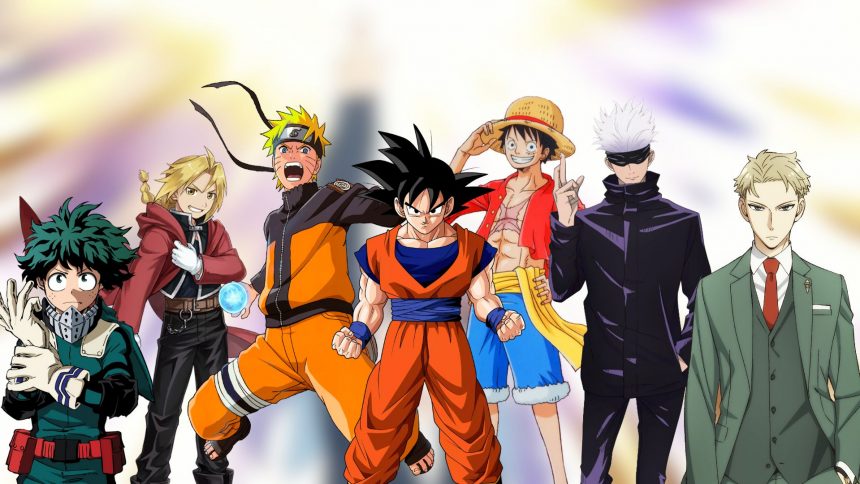Anime and manga have become cultural powerhouses that extend far beyond their origins in Japan. These art forms, characterized by their distinct animation and storytelling styles, have gained a massive following worldwide. With their unique blend of vibrant visuals, compelling narratives, and diverse genres, anime and manga have left an indelible mark on global pop culture. In this article, we will explore the profound influence of anime and manga on various aspects of our modern society.
Influence of Anime Pop Culture on Global Economy
The impact of anime and manga on the global economy cannot be overstated. These industries generate billions of dollars in revenue each year through various avenues. One significant source of income is merchandise sales. From figurines and clothing to accessories and collectibles, the market for anime and manga-related products is vast. Fans eagerly purchase these items to show their support for their favorite series or characters, contributing to a thriving industry. Additionally, the rise of streaming platforms dedicated to anime has provided a convenient and legal means for fans around the world to access their favorite shows. This accessibility has resulted in a significant increase in subscriptions and revenue for these platforms. Furthermore, the licensing of anime and manga for distribution in different countries has opened up new markets and revenue streams, creating opportunities for international collaboration and business ventures.
The economic impact of anime and manga extends beyond sales and revenue generation. These industries also play a vital role in job creation and employment opportunities. The production of anime series and manga publications requires a vast network of talented individuals, including animators, writers, illustrators, voice actors, editors, and many others. The demand for skilled professionals in these fields has led to the establishment of numerous animation studios, publishing companies, and related businesses. This growth has not only provided employment opportunities but has also fueled the development of specialized educational programs and institutions to train the next generation of artists and creators.
Influence of Anime and Manga on Fan Activities
Anime and manga have cultivated vibrant and passionate fan communities around the world. These communities come together through various activities, both online and offline, to celebrate their shared love for these art forms. One notable phenomenon is the proliferation of anime and manga conventions. These gatherings attract thousands of fans who converge to immerse themselves in the world of anime and manga. Conventions offer a wide range of activities, including panel discussions, screenings, cosplay contests, and artist alleys. They provide a platform for fans to meet their favorite creators, interact with like-minded individuals, and showcase their creativity through cosplay and fanart. The sense of community and camaraderie fostered by these conventions is a testament to the profound impact of anime and manga on fan culture.
In addition to conventions, online platforms and social media have played a significant role in connecting anime and manga enthusiasts worldwide. Online forums, dedicated websites, and social media groups provide spaces for fans to discuss their favorite series, share fan theories, and engage in lively debates. These platforms have also given rise to the creation of fan communities centered around specific anime or manga titles, allowing fans to connect with others who share their interests. The internet has undoubtedly contributed to the globalization of anime and manga fandom, breaking down geographical barriers and creating a sense of global community among fans.
Further Readings: The Globalization of Anime Industry
Influence of Anime Pop Culture on Other Impacted Sectors
The influence of anime and manga extends beyond the realms of entertainment and fandom. These art forms have inspired and influenced various sectors, leaving their mark on fashion, tourism, and cross-media collaborations. In the realm of fashion, anime and manga have served as a source of inspiration for designers and enthusiasts alike. Elements of anime and manga aesthetics, such as bold colors, unique character designs, and distinct fashion styles, have made their way into mainstream fashion and streetwear. Collaborations between renowned fashion brands and popular anime franchises have resulted in limited-edition collections that cater to both anime fans and fashion enthusiasts.
Anime and manga have also had a significant impact on tourism. The concept of “anime pilgrimage” has emerged, where fans travel to real-life locations depicted in their favorite anime or manga series. These locations, often referred to as “anime holy sites,” attract a steady stream of visitors who wish to experience the settings and landmarks associated with their beloved stories. This phenomenon has led to increased tourism in certain regions, boosting local economies and encouraging infrastructure development to accommodate the influx of visitors.
Furthermore, anime and manga have become fertile ground for cross-media adaptations and collaborations. Popular anime series are often adapted into live-action films or television shows, expanding their reach and introducing them to new audiences. Conversely, anime and manga have also embraced elements from other mediums, such as video games and novels, resulting in unique and immersive storytelling experiences. These cross-media adaptations and collaborations not only fuel creativity but also contribute to the overall growth and diversification of the anime and manga industries.
How did anime pop culture becomes popular outside of Japan?
The popularity of anime and manga outside of Japan can be attributed to various factors. One key factor is globalization and the increasing interconnectedness of the world. The internet has played a crucial role in disseminating anime and manga content to a global audience. Online platforms and streaming services have made it easier than ever for fans to access and consume anime and manga regardless of their geographical location. Moreover, the unique storytelling styles, visually stunning animation, and diverse range of genres offered by anime and manga have resonated with audiences worldwide. As fans discovered the depth and richness of these art forms, word-of-mouth and social media sharing further fueled their popularity, leading to an exponential growth in their global fan base.
What are some notable anime and manga series that have had a significant impact on global pop culture?
Several anime and manga series have left an indelible mark on global pop culture. One such series is “Dragon Ball,” created by Akira Toriyama. Known for its epic battles, engaging characters, and iconic transformations, “Dragon Ball” captivated audiences around the world and became a cultural phenomenon. Another influential series is “Naruto” by Masashi Kishimoto, which follows the journey of a young ninja striving to become the strongest in his village. The themes of friendship, perseverance, and self-discovery resonated with fans globally, making “Naruto” one of the most beloved and recognized anime and manga franchises. Other notable series include “One Piece,” “Attack on Titan,” “Death Note,” and “My Hero Academia,” each leaving their unique imprint on global pop culture.
Conclusion
In conclusion, anime and manga have emerged as powerful cultural phenomena, exerting a significant influence on global pop culture. These art forms have transcended geographical boundaries, captivating audiences worldwide with their captivating narratives, stunning animation, and diverse genres. The impact of anime and manga extends beyond entertainment, reaching into various sectors and leaving an indelible mark on our modern society.













